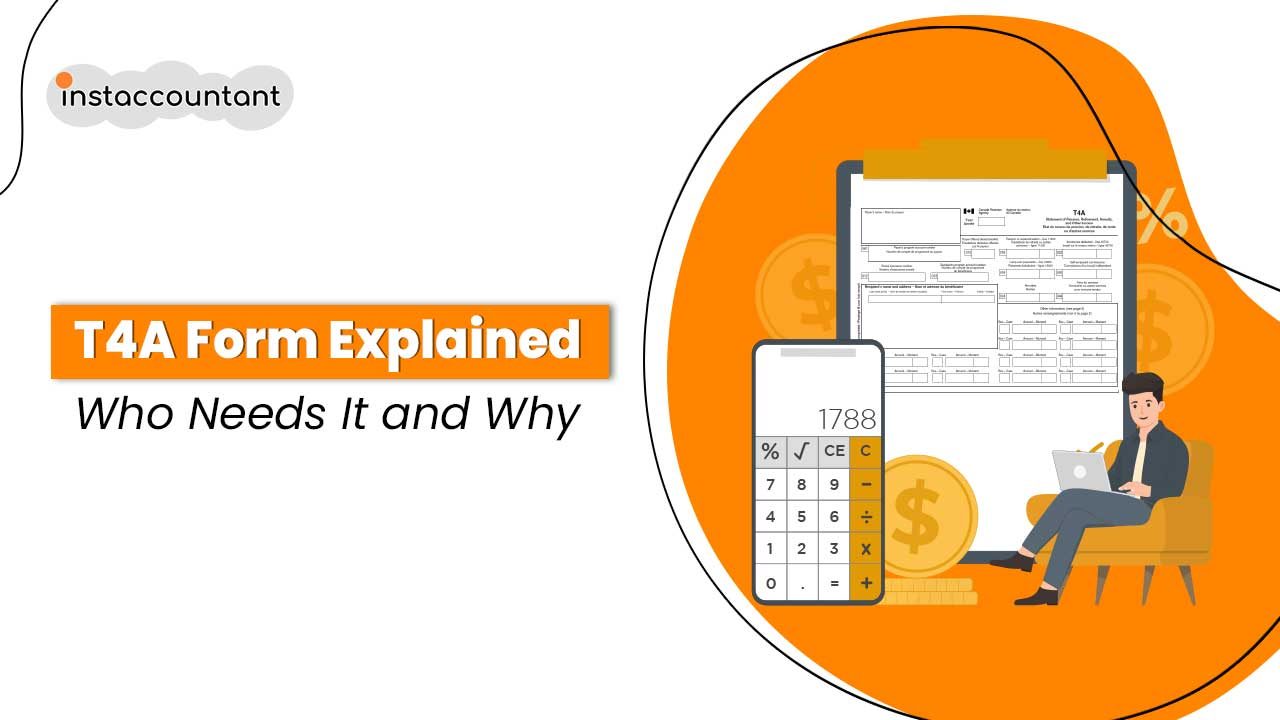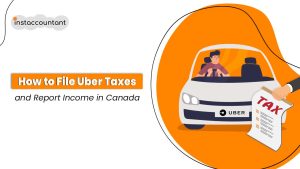The T4A form, also known as the “Statement of Pension, Retirement, Annuity, and Other Income,” is a crucial tax document in Canada. This form is used to report various forms of income received by individuals that fall outside the standard employment income reported on a T4 slip. Understanding the T4A form is essential for individuals and organizations involved in various forms of income disbursement in Canada. This blog post will delve into the intricacies of the T4A form, covering its purpose, who needs it, what types of income it reports, and how to ensure accurate filing.
Who Needs a T4A Form?
The T4A form is essential for anyone receiving income beyond a regular employment salary. Here are the key groups that receive a T4A:
- Freelancers and Contractors: If you’ve provided services as an independent contractor or freelancer and received payments totaling $500 or more from a single payer during the tax year, you’ll receive a T4A form. This covers professionals in diverse fields, including IT consulting, graphic design, and any other contracted services.
- Pensioners: Individuals receiving pension payments or retirement income from registered pension plans or other sources will also receive a T4A form. This includes pensions from former employers, Registered Retirement Savings Plans (RRSPs), and other sources.
- Students and Apprentices: If you’ve received grants, scholarships, or other forms of financial assistance related to your education, these payments are often reported on a T4A form. Educational institutions typically issue this form to students who qualify for financial aid.
- Commission-Based Income: Sales representatives or agents receiving commissions on sales are required to receive a T4A if their earnings meet the reporting threshold. This ensures that all income sources are documented for tax purposes.
- Other Types of Income: Various other payments may necessitate a T4A form, including honorariums, jury duty fees, certain types of support payments, and even income from investments like interest and dividends. It’s crucial to keep track of all income received from different sources to ensure proper tax reporting.
Understanding the Different Types of Income Reported on a T4A Form
To fully understand the T4A form, it’s crucial to understand the types of income that are often reported on it.
- Freelance Income: Payments received for services like writing, graphic design, web development, photography, or any other freelance work.
- Contractor Fees: Earnings from short-term contracts for specialized services, like IT consulting, marketing analysis, construction work, or any other project-based services.
- Pension Payments: Regular payments from registered pension plans or annuity contracts.
- Scholarships and Grants: Financial assistance received by students for education, including research grants, bursaries, and student loans.
- Commission Payments: Earnings derived from sales, such as commissions paid to real estate agents, insurance brokers, or sales representatives.
- Honorariums: Payments for participating in public speaking engagements or providing expert advice.
- Jury Duty Fees: Compensation received for fulfilling civic duties, such as serving on a jury.
- Alimony or Support Payments: Payments received as alimony or child support are also reported on a T4A form.
- Other Income: This category includes a wide range of income sources, including interest and dividends from investments, rental income, and royalty payments.
Common Mistakes to Avoid When Filing T4A Income
While the T4A form is straightforward, errors can occur. Here are some common mistakes to avoid:
- Incorrect Amounts: Double-check that the total income reported on your T4A matches your records. Mistakes can lead to penalties or additional tax liabilities.
- Missing Income: Ensure all sources of income are accounted for. Failing to report all payments received can result in audits or penalties.
- Incorrect Box Selection: The T4A form has specific boxes for different types of income. Make sure you select the correct one to avoid confusion and ensure accurate reporting.
- Not Reporting Timely: Submit your T4A information by the deadline to avoid late penalties. The CRA’s filing deadline for individuals is April 30th of each year.
The Impact of T4A Income on Tax Credits and Benefits
Reporting income on the T4A can affect eligibility for various government benefits and credits, particularly for students or low-income individuals. For example, higher reported income may reduce the amount of financial assistance available or affect eligibility for programs such as the Canada Child Benefit (CCB) or the Goods and Services Tax (GST) credit. It’s essential to understand how your reported income interacts with these programs to make informed financial decisions.
Why is the T4A Form Important?
The T4A form plays a crucial role in the Canadian tax system for both individuals and the government. Here’s why:
- Tax Compliance: The T4A form helps ensure that both the payer and payee are compliant with tax laws. It provides a clear record of income, which is necessary for accurate tax filings.
- Income Reporting: For recipients, the T4A serves as an official document that outlines total income received during the tax year. This is crucial for accurately reporting income on personal tax returns.
- Audit Protection: Having a T4A form can protect both payers and recipients in the event of a CRA audit. It provides documented proof of payments made, which can clarify any discrepancies.
- Claiming Deductions: Recipients can use the information from the T4A to claim applicable deductions or credits, helping to minimize tax liability.
- Financial Planning: Understanding the income reported on a T4A form can aid in better financial planning and budgeting for future expenses and taxes.
Step-by-Step Guide to Filing Your T4A Information
Here’s a straightforward process for filing your T4A information:
- Gather Information: Collect all necessary details, including payer information (name, address, tax number), income amounts, and the type of income received (e.g., freelance fees, pension payments, scholarships).
- Fill Out the Form: Complete the T4A form by entering the total income amounts in the appropriate boxes and providing your personal information (name, address, Social Insurance Number (SIN).
- Review for Accuracy: Double-check all entries to ensure there are no mistakes. Verify that the income amounts match your records, and the correct boxes are selected.
- Submit the Form: Payers must submit the T4A form to the CRA by the end of February each year. Recipients should keep a copy for their records and report the income on their tax returns by the April 30th deadline.
Important Additional Information:
- T4A-NR Form: Non-residents receiving Canadian-source income may receive a T4A-NR form, which is similar to the T4A but has specific reporting requirements for non-residents.
- T4A(P) Form: This form is used to report pension income from registered pension plans.
- T4A(O) Form: This form is used to report other types of income, such as alimony or child support payments.
Conclusion
Filing the T4A Form involves responsibilities for both the payer and the recipient. Payers are required to issue the form by the end of February each year, ensuring that recipients receive their forms in a timely manner. Recipients must then accurately report this income on their tax returns.
Understanding the implications of the T4A Form is vital for anyone receiving non-employment income, as it serves as a key tool for maintaining compliance with Canadian tax regulations. Proper handling of the T4A Form not only aids in tax compliance but also contributes to the overall integrity of the tax system.
FAQs
Q: What should I do if I don’t receive a T4A form?
A: If you believe you should have received a T4A form but haven’t, contact the payer to request it. You are still responsible for reporting all income on your tax return, even if you do not receive the form.
Q: How do I correct mistakes on my T4A form?
A: If you find an error on a T4A form you’ve already submitted, contact the payer to issue a corrected T4A slip. You can then amend your tax return to reflect the correct information.
Q: What happens if I fail to report T4A income?
A: Failing to report T4A income can lead to penalties, interest on unpaid taxes, and potential audits by the CRA. Always ensure that all income is accurately reported.




